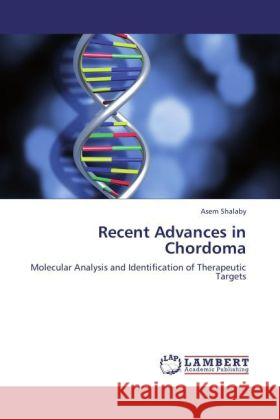Recent Advances in Chordoma » książka
Recent Advances in Chordoma
ISBN-13: 9783844394771 / Angielski / Miękka / 160 str.
Chordoma is a rare malignant bone tumour, showing notochordal differentiation and occurs in the axial skeleton. Brachyury, a molecule involved in notochordal development, is a highly specific and sensitive marker for chordoma. It is hypothesised that brachyury or genes involved in its activation are implicated in the pathogenesis of chordoma. As there is no effective drug therapy for chordoma, the aim was to identify genetic events involved in chordoma pathogenesis with a view to identifying potential therapeutic targets. PI3K/AKT/TSC/mTOR pathway was found activated in 65% of chordomas, thereby providing a rationale for testing mTOR inhibitors for the treatment of selected cases. The fibroblastic growth factor receptor pathway was activated in more than 90% of the analysed cases. Nearly half of the cases showed chromosomal abnormalities involving the brachyury locus. Knockdown of brachyury gene was achieved, for the first time, in the U-CH1 chordoma cell line using shRNA and resulted in premature cell senescence. EGFR copy number gain was detected by FISH in 45% of chordomas. The EGFR inhibitor, tyrphostin (AG1478) significantly inhibited growth of the chordoma cell line.











